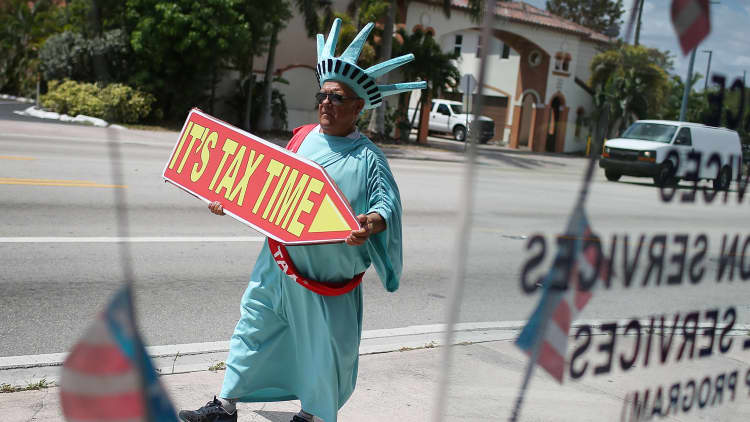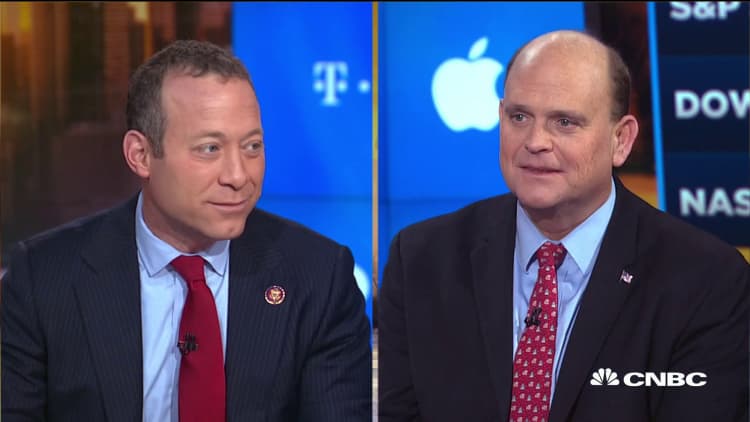Millions of households sidestepped the hated alternative minimum tax in 2018. You have the Tax Cuts and Jobs Act to thank for it.
About 5 million households were subject to the AMT in the 2017 tax year, according to the IRS. That number fell to about 150,000 the following year, according to the agency's analysis of returns processed through Nov. 21, 2019.
The AMT is a levy that applies to taxpayers who would otherwise use an array of deductions to reduce their liability.
"There are much fewer people in the AMT," said Lisa Featherngill, CPA and member of the American Institute of CPAs' personal financial planning committee. "Many taxpayers didn't understand the AMT to begin with, so it wasn't intuitive."
What is the AMT
Filers who are subject to the AMT would calculate their income tax liability twice: Once under ordinary tax rules, and a second time with the AMT, which would back out personal exemptions and certain itemized deductions, such as the state and local tax deduction.
"State and local taxes pushed people into AMT quite easily," said Evan Morgan, CPA and tax director at Kaufman Rossin in Miami. "Prior to 2018, state and local tax deductions were one of the largest itemized deductions on most people's returns."
Taxpayers would look at their liabilities under the ordinary rules and the AMT and then pay whichever tax was the highest.
Changes under Trump

The Tax Cuts and Jobs Act blunted the effect of the AMT in two ways, subjecting fewer households to this levy.
First, the new law increased the AMT exemption. In 2017, the exemption was $54,300 for single filers ($84,500 for married filing jointly).
For the 2020 tax year, the exemption is $72,900 for singles and $113,400 for married couples.
Second, this AMT exemption begins to phase out once a taxpayer's income hits a certain threshold — meaning the benefit decreases for high-income taxpayers.
More from Smart Tax Planning:
How to maximize traditional and Roth retirement savings
Some weird tax breaks have become harder to claim
Got a student loan? Don't forget this tax break
In 2017, the exemption would phase out when AMT taxable income hit $120,700 for single filers ($160,900 for married taxpayers).
The Trump tax law increased those thresholds as well, allowing higher income households to take advantage of the exemption.
In 2020, the phaseout begins when AMT taxable income is $518,400 for single filers ($1.037 million for married couples).

"Under today's laws, it's highly unlikely that you'll be in the AMT unless one of two things is true: You exercise many incentive stock options or you have a significant amount of private activity bonds," said Jeffrey Levine, CPA and CEO of BluePrint Wealth Alliance in Garden City, New York.
Be aware that the change to the AMT is in effect until 2026, at which point more than 7 million taxpayers — largely those with more than $200,000 in income — may be subject to the levy again, according to Tax Policy Center estimates.





